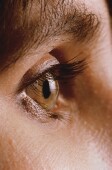
MONDAY, Nov. 15 (HealthDay News) — Could cholesterol deposits on or around people’s eyelids help doctors assess cardiovascular risk?
A preliminary Danish study suggests that the deposits could point to an increased risk for heart attack, arterial disease and early death.
Half of patients with such deposits, a condition called xanthelasmata, actually have normal cholesterol levels. The research team therefore believes that buildup of cholesterol on the eyelid is perhaps a marker for cardiac risk, regardless of a patient’s cholesterol profile.
“In societies where other cardiovascular disease risk factors can’t be readily measured, presence of xanthelasmata may be a useful predictor of underlying atherosclerotic disease [hardening of the arteries],” the study authors said in an American Heart Association news release.
Led by Mette Christoffersen of Copenhagen University Hospital and the University of Copenhagen in Denmark, the research team was to present the findings Sunday at the AHA’s annual meeting in Chicago.
In their study, the team tracked the health of nearly 13,000 patients who were examined for the presence of such eyelid deposits.
The researchers found that those with the condition had a higher rate of heart disease and heart attack as they got older, and a poorer survival rate as compared with those who did not have the condition.
Specifically, xanthelasmata was linked to a 51 percent bump in the risk for a heart attack and a 40 percent rise in the risk for ischemic heart disease. The risk for death rose by 17 percent among such patients.
Experts point out that research presented at meetings typically does not go through the tougher scrutiny of studies published in respected journals.
More information
For more on cholesterol and heart disease risk, visit the American Heart Association.

